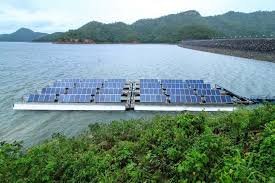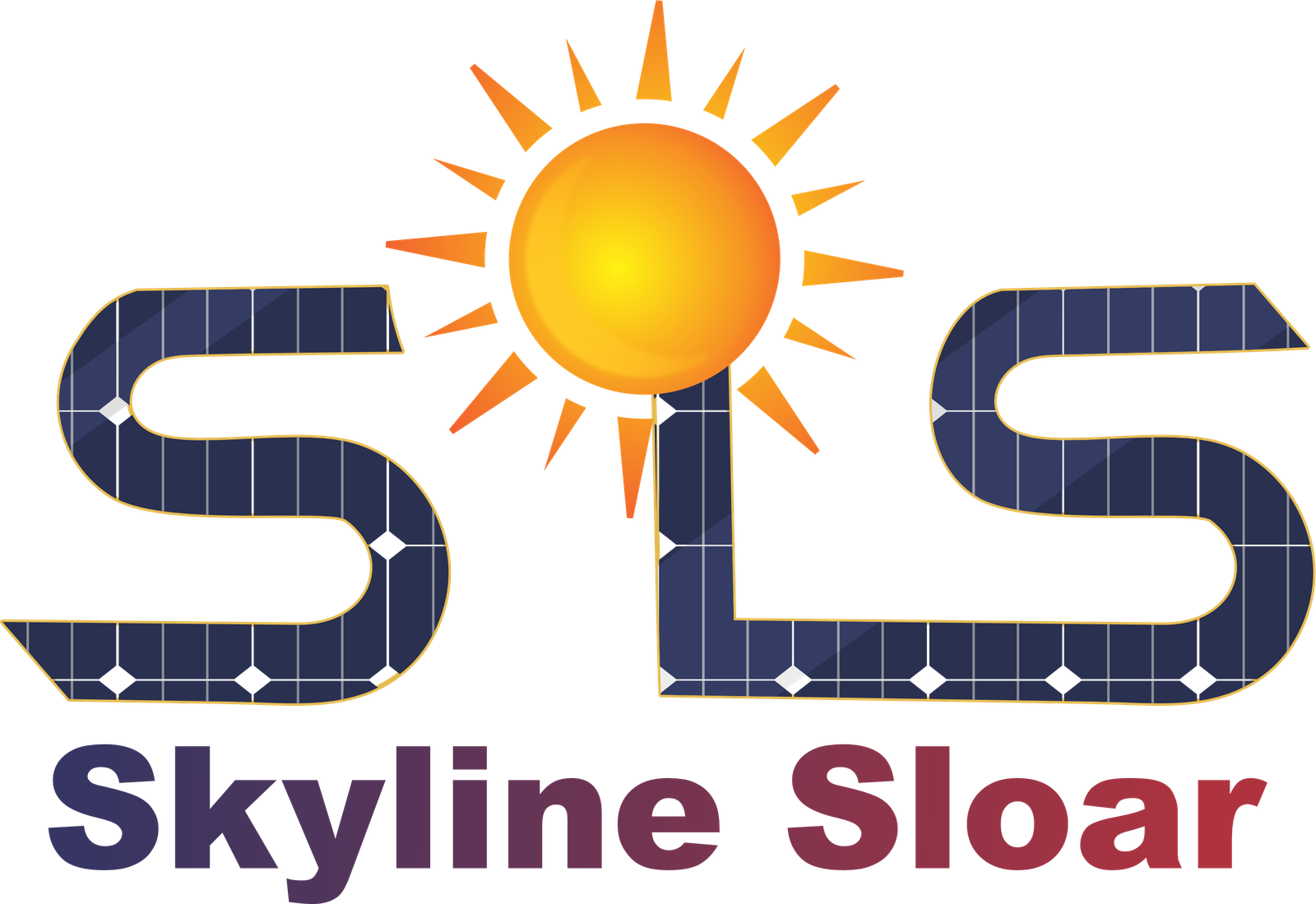GRID-TIED VS OFF-GRID SOLAR SYSTEMS: WHICH IS BEST FOR YOU? Deciding between grid-tied vs off-grid solar systems can feel you overwhelming with worries about costs, reliability, environmental impact, and understanding technical and regulatory aspects. By offering clear guidance on these factors, individuals can confidently choose the best option for their needs and values.
WHAT ARE GRID-TIED SOLAR SYSTEMS?
An on-grid solar system, also called grid-tied, connects to the electricity grid. Solar panels generate power from sunlight, converted into electricity for homes or businesses. Extra electricity can go back to the grid, using net metering. When solar power is low, like at night, grid electricity is used. If solar power exceeds needs, surplus electricity can be sold to the grid. When it comes on grid-tied vs off-grid solar systems, On-grid solar is popular for using solar energy and still having grid electricity when needed. It cuts bills and fossil fuel use.

WHAT ARE OFF-GRID SOLAR SYSTEMS?
Off-grid solar systems are like mini power stations that use sunlight to make electricity. They work independently, meaning they don’t need to be connected to the main power grid. Instead, they’re used in places where there’s no regular electricity supply, like remote areas or far-off cabins.
These grid-tied vs off-grid solar systems have a few main parts. First, there are the solar panels, which soak up sunlight and turn it into electricity. Then, there’s a charge controller, which makes sure the electricity flows smoothly from the panels to the batteries without getting too full. Next, there are the batteries. They store all the electricity made by the solar panels so it can be used later when there’s no sunlight. Lastly, there’s an inverter, which changes the stored electricity from the batteries into the kind that regular appliances and devices can use.
DIFFERENCES BETWEEN GRID-TIED AND OFF-GRID SOLAR SYSTEMS

- Connection to the Grid
- Energy Storage
- Cost
- Durability
- Grid Independence
- Environmental Influence
- Backup Electricity
- Maintenance
- Energy Utilization
- Stability Considerations
- Financial Advantages
- Geographic Adaptivity
1.CONNECTION TO THE GRID
In a grid-tied solar system, solar panels generate electricity converted by an inverter to AC which is the main difference between grid-tied vs off-grid solar systems. This AC power is used in your property’s electrical system and any excess can be sent back to the grid through net metering. The utility grid acts as a backup when solar production is insufficient. Net metering credits you for excess electricity fed back, offsetting grid consumption. At the end of each billing period, you’re billed for net electricity consumed. This setup provides reliability, flexibility, and benefits from renewable energy.

In a grid-tied solar system, solar panels convert sunlight into electricity, which is then converted from DC to AC by an inverter. This AC electricity is used in your home and any excess is sent back to the grid. Net metering measures the electricity you consume and the surplus you contribute, providing credits or compensation. The grid serves as backup during low solar production. Monitoring systems track solar panel performance and electricity production. This setup ensures reliable power supply while allowing you to benefit from and contribute to the larger electrical infrastructure.

2. ENERGY STORAGE
Energy storage in grid-tied solar systems means using batteries to save extra electricity made by solar panels. These batteries fill up when the sun shines and use that energy later when the sun isn’t out or when more power is needed. This stored energy can run the house at night or during blackouts, making people less reliant on the grid. Also, it helps save money by using stored energy when electricity prices are high. So, energy storage makes grid-tied solar systems more reliable, flexible, and cheaper in the long run.
In off-grid solar systems, energy storage is crucial for capturing surplus energy generated during sunny periods and utilizing it when sunlight isn’t available. This typically involves the use of batteries, such as deep-cycle lead-acid or lithium-ion batteries, which store excess electricity produced by the solar panels. When solar production is low or at night, stored energy from the batteries powers appliances and devices. Energy management systems regulate the flow of electricity between the solar panels, batteries, and appliances, ensuring efficient usage and prolonging battery lifespan.
3. COST
GRID-TIED SOLAR SYSTEM
The cost of a grid-tied solar system can vary based on factors like system size, quality of components, and installation fees. On average, for a typical home setup in the US, it ranges from $10,000 to $25,000 upfront. This covers things like solar panels, inverters, mounting gear, permits, and labor. However, government incentives and rebates can help cut these costs. Over time, the savings on electricity bills and benefits like net metering can make grid-tied solar a smart investment.The cost of a grid-tied solar system can vary based on several factors, including the size of the system, the quality of the components, and the complexity of installation. Generally, for a typical residential setup in the United States, the cost can range from around $10,000 to $30,000 before incentives and rebates.
OFF-GRID SOLAR SYSTEM
The expense of an off-grid solar system can fluctuate based on factors like system size, component quality, and installation charges. Typically, for a small-scale system intended to power basic appliances in a remote cabin or off-grid dwelling, costs can range from several thousand to tens of thousands of dollars. Larger systems capable of supplying energy to bigger homes or properties with higher energy demands can incur significantly higher expenses. These costs generally cover solar panels, batteries for storing energy, inverters, charge controllers, wiring, and installation labor.The cost of an off-grid solar system can vary depending on several factors such as the size of the system, the quality of components used, and installation expenses. Typically, the initial investment includes expenses for solar panels, batteries, inverters, charge controllers, and other necessary equipment.

4. DURABILITY
Grid-tied solar systems are engineered for durability, capable of withstanding diverse environmental conditions for prolonged performance. Solar panels are crafted with tempered glass and robust frames to endure hail, high winds, and other weather challenges. Inverters and related components adhere to industry standards for reliability and extended lifespan. Professional installation by certified technicians further bolsters durability, minimizing risks of damage and ensuring consistent performance. Moreover, many manufacturers offer warranties on solar panels and inverters, covering defects and malfunctions for specified periods, typically ranging from 10 to 25 years. With proper upkeep, grid-tied solar systems serve as dependable, enduring sources of renewable energy.
Off-grid solar systems last a long time if they’re made well and looked after. Good systems, with good solar panels and batteries, can last 20 to 30 years or more. To make them last, you need to check them often, keep them clean, and replace parts when needed. Where you put them and how well they’re installed also matters. These systems are tough and can handle rough conditions, so they’re great for making energy in faraway places.
5. GRID INDEPENDENCE

Grid-tied solar systems rely on the main electrical grid for backup power when solar production is low, like at night or on cloudy days. While they contribute to renewable energy production and can lower electricity bills, they aren’t fully independent from the grid. In contrast, off-grid solar systems operate independently, storing surplus energy in batteries for use when needed. They provide reliable power in remote areas without access to the main grid. So, while grid-tied systems offer benefits, they don’t offer the same level of independence as off-grid systems.
Off-grid solar systems give you freedom from the main power grid. They use sunlight to make electricity and store it in batteries. So, you can use it anytime, even if you’re not connected to the regular power grid. These systems are great for faraway places or places where it’s hard or expensive to connect to the grid. With off-grid systems, you can make your own renewable energy and use it without depending on others.

GRID-TIED SOLAR SYSTEM
| Benefit | Grid-tied solar systems save on bills, reduce reliance on non-renewables, and promote cleaner energy. |
|---|---|
| Drawback | Grid-tied solar systems are vulnerable to power outages during grid failures. |
| Good for | Grid-tied solar systems are great for cutting electricity costs and reducing carbon footprint. |
| Bad for | Grid-tied solar systems lack reliability during power outages and limit energy independence. |
OFF-GRID SOLAR SYSTEM
| Benefit | Off-grid solar systems offer energy independence and resilience, particularly in remote areas or during power outages. |
|---|---|
| Drawback | Off-grid solar systems have higher initial costs, limited energy storage, and require frequent maintenance. |
| Good for | Off-grid solar panels are great for supplying power in remote areas, for cabins, RVs, boats, and as emergency backups. |
| Bad for | If you use equipment that consumes a lot of electricity or cannot afford the high upfront costs. |
6. ENVIRONMENTAL INFLUENCE
Grid-tied solar systems positively impact the environment. By utilizing sunlight for electricity generation, they reduce the need for fossil fuels, thereby lowering greenhouse gas emissions and addressing climate change. Compared to traditional power plants, these systems have a smaller land footprint and less environmental impact. They also enhance energy independence by diversifying the energy mix and decreasing reliance on centralized power sources. In summary, grid-tied solar systems play a vital role in promoting sustainability and minimizing environmental harm.
Off-grid solar systems are good for the environment. They use sunlight, so they don’t need fossil fuels, which cause pollution. These systems are quiet and don’t harm the environment much. Also, they help save natural resources by using renewable energy. Off-grid solar systems make the environment cleaner and healthier, which is great for people who care about nature.

7. BACKUP ELECTRICITY
Grid-tied solar panels usually lack backup power capabilities. However, you can integrate battery storage for backup electricity. Hybrid inverters allow retrofitting with batteries. Another option is a backup generator that kicks in during outages. Each option has pros and cons. Consider your needs and budget before deciding.
For off-grid solar panels, backup electricity options include battery storage for storing excess energy, generators for cloudy days or nights, and wind turbines or hydroelectric systems for additional power generation. In some cases, off-grid systems may also connect to the main grid for backup power. Combining methods like batteries and generators ensures reliable electricity supply. Assessing factors like location, budget, and energy needs helps in choosing the right backup system, usually involving a mix of solutions tailored to specific requirements.
8. MAINTENANCE
Maintaining off-grid solar systems is crucial for optimal performance. Tasks include regular panel cleaning, inspecting wiring, and monitoring battery health. Inverters should be checked for dust buildup and proper ventilation. Utilize monitoring tools to track energy production and conduct routine inspections for timely issue detection. Trimming surrounding vegetation prevents shading on panels. By staying proactive, off-grid solar systems can ensure reliable and sustainable energy output.
Maintaining off-grid solar systems involves regular panel cleaning, inspecting connections, monitoring battery health, checking inverters, system monitoring, trimming vegetation, and scheduling professional inspections. These practices ensure optimal performance, longevity, and reliability of the system, maximizing sustainable power generation.
ENERGY UTILIZATION
Grid-tied solar systems utilize energy by generating electricity from sunlight and feeding it directly into the grid. This electricity is used to power homes, businesses, and other facilities connected to the grid. During periods of high solar production, excess energy may be exported to the grid, offsetting electricity consumption and potentially earning credits through net metering or feed-in tariffs.
Off-grid solar systems efficiently harness sunlight using solar panels, converting it into electricity stored in batteries. This stored energy powers various applications like lighting and appliances, ensuring continuous supply even without sunlight. Careful planning ensures the system matches user needs, optimizing energy usage in remote locations.

10. STABILITY CONSIDERATIONS
GRID-TIED SOLAR SYTEMS
Grid-tied solar panels need stability for reliable operation. This includes meeting grid standards, regulating voltage, and having anti-islanding protection. Solar inverters should respond quickly to grid changes, with fault detection to minimize downtime. Redundancy measures ensure continuous operation during failures or disturbances. By addressing these concerns, grid-tied solar systems integrate smoothly and safely with the existing power grid.
OFF-GRID SOLAR SYSTEMS
Ensuring the stability of off-grid solar panels involves sturdy mounting structures, proper panel orientation for optimal sunlight exposure, and assessing terrain for secure foundations. Weather-resistant materials and regular maintenance help withstand various conditions and prevent damage. By considering these factors, off-grid solar systems can reliably generate sustainable energy in remote areas.

11. FINANCIAL ADVANTAGES
Grid-tied solar systems provide financial advantages through net metering, lowering electricity bills, and offering a return on investment. Incentives and tax benefits further offset installation costs, while increased property value adds long-term benefits. Solar energy hedges against future electricity costs, providing stability and potential revenue.
Off-grid solar systems offer financial advantages such as reduced energy bills, no connection fees, and minimal maintenance costs. They provide energy independence, long-term investment potential, and eligibility for government incentives. Additionally, they increase property value and offer cost stability by reducing exposure to volatile energy markets. Overall, off-grid solar is a financially attractive option for individuals and businesses seeking to save money while promoting sustainability.
12. GEOGRAPHIC ADAPTIVITY
Grid-tied solar panels are adaptable to various geographic locations, with their effectiveness influenced by factors like sunlight availability, weather patterns, and local regulations. In regions with ample sunlight, such as deserts or sunny coastal areas, solar panels can generate significant electricity output. However, in areas with frequent cloud cover or limited sunlight, their efficiency may be reduced. Additionally, local regulations and incentives can impact the installation and integration of grid-tied solar systems. Despite these variations, grid-tied solar panels remain a versatile and increasingly popular renewable energy solution worldwide.
Off-grid solar panels work everywhere by using sunlight to make electricity. They’re great for places far from power lines, giving independence. These panels can change size to fit different energy needs and places. They work well in sunny spots like deserts and places with no reliable electricity. Off-grid solar panels are flexible and help with energy in many different areas.

FREQUENTLY ASKED QUESTIONS
CONCLUSION
In conclusion, choosing between grid-tied and off-grid solar systems depends on personal preferences, energy needs, and location. Grid-tied systems let you sell excess energy and often cost less upfront, great for cities with reliable grids. Off-grid systems offer complete energy independence, ideal for remote areas, but require a hefty initial investment for batteries. Both options support renewable energy and offer sustainable alternatives to traditional power. Deciding factors include cost, reliability, and environmental impact, making it crucial to weigh your options carefully.






